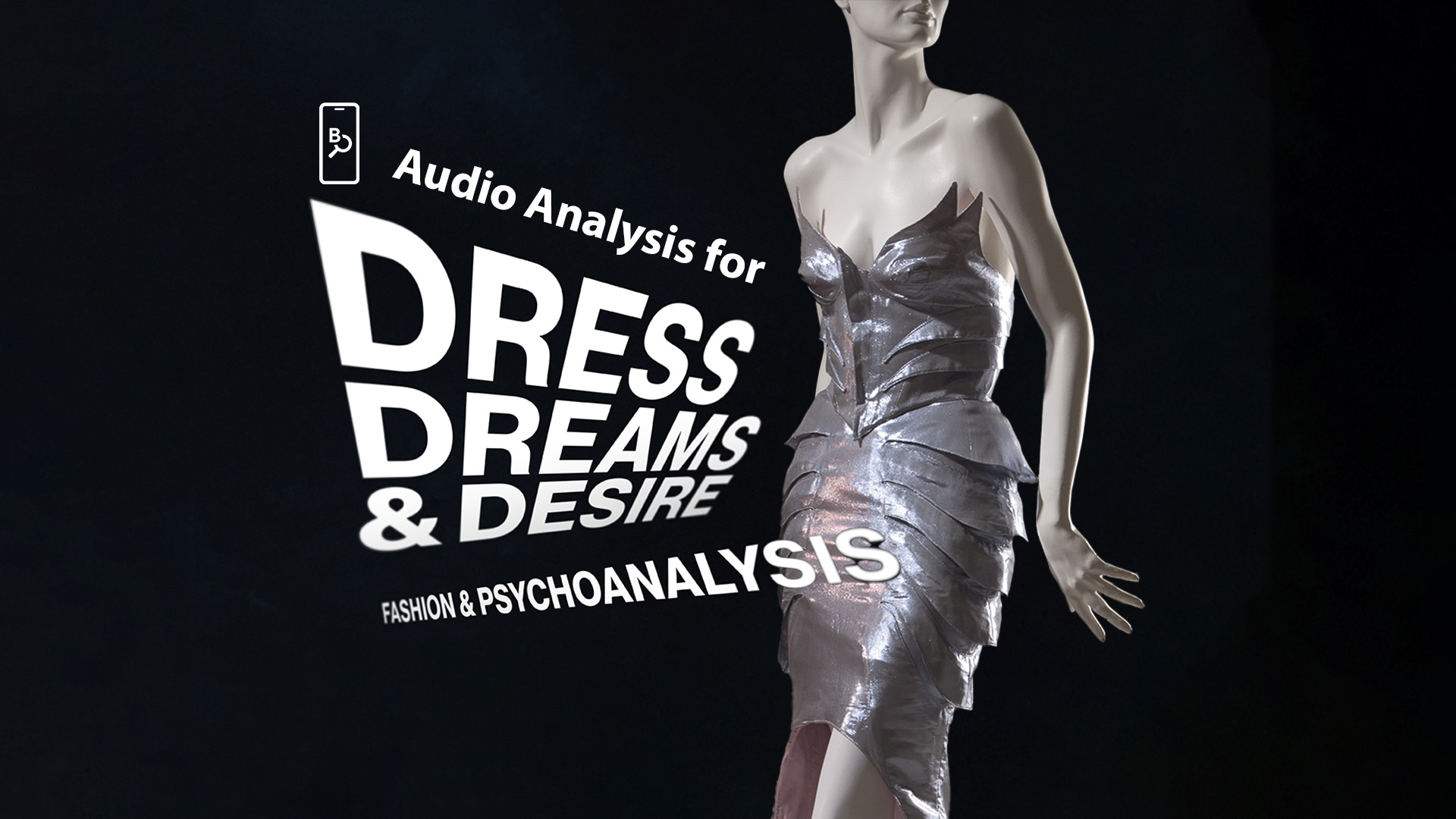Dress, Dreams, and Desire: Fashion and Psychoanalysis
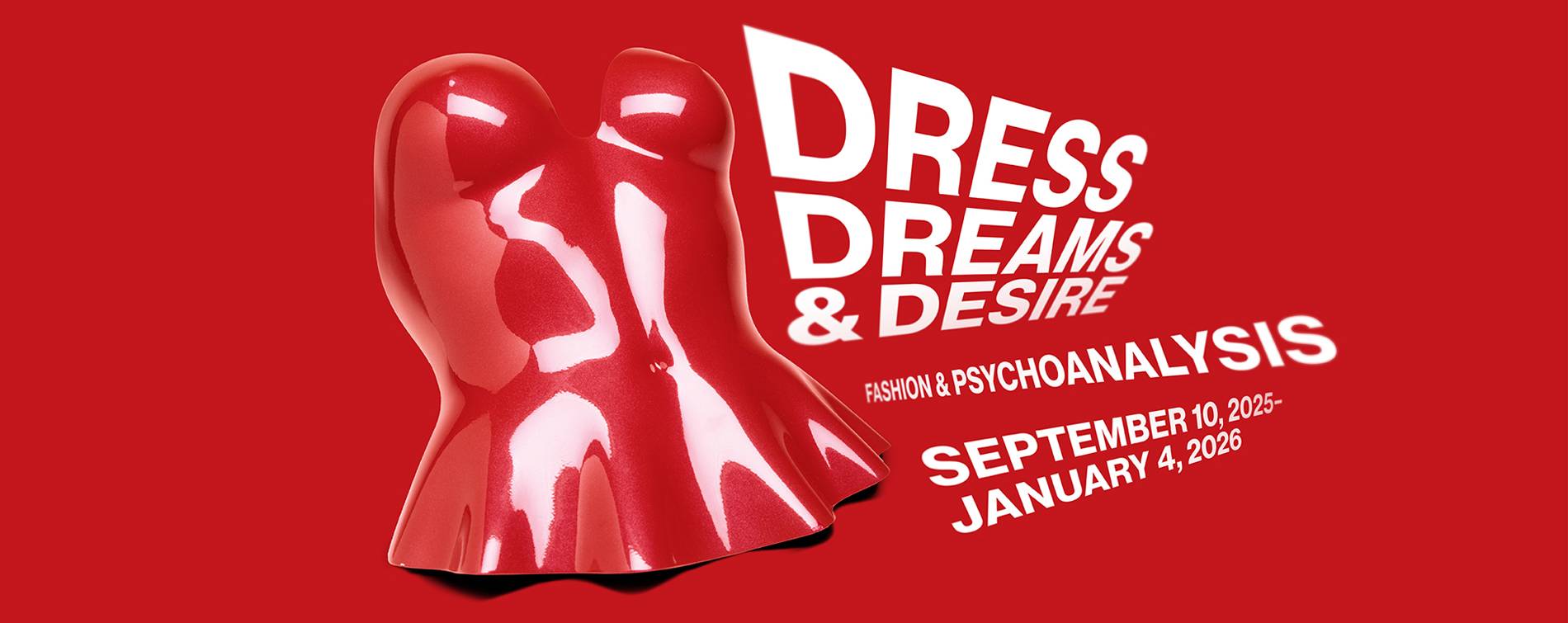
Share your excitement using #DressDreamsDesire
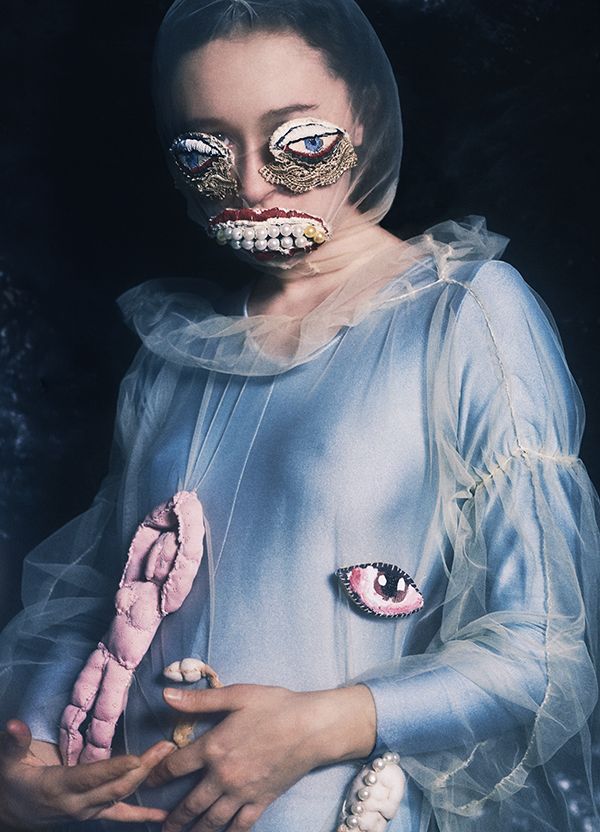
"This super-smart yet viewer-friendly show is yet another
feather in the cap of M.F.I.T." — Laura Jacobs, Air Mail
The first exhibition to explore the cultural history of fashion and psychoanalysis, Dress, Dreams, and Desire: Fashion and Psychoanalysis draws on key psychoanalytic concepts about the body, sexuality, and the unconscious to interpret almost 100 items of dress by designers including Azzedine Alaïa, Gabrielle "Coco" Chanel, Willy Chavarria, Bella Freud, John Galliano for Christian Dior, Jean Paul Gaultier, Rei Kawakubo of Comme des Garçons, Alexander McQueen, Thierry Mugler, Rick Owens, Olivier Rousteing for Balmain, Sonia Rykiel, Elsa Schiaparelli, Jeremy Scott for Moschino, Jun Takahashi of Undercover, Gianni and Donatella Versace, Viktor & Rolf, Grace Wales Bonner, Vivienne Westwood, and Yohji Yamamoto.
Curated by MFIT Director and Chief Curator Dr. Valerie Steele, who was dubbed "the Freud of Fashion" by critic Suzy Menkes, the exhibition is the result of five years of research, reflecting the museum's commitment to original inquiry and creative thinking about the cultural significance of dress. Dress, Dreams, and Desire: Fashion and Psychoanalysis coincides with the release of Steele's exhibition companion book in November.
Fashion is a primary lens through which we see ourselves—and how others see us. Far from being superficial, fashion can be regarded as a ‘deep surface' that communicates our unconscious desires and anxieties, with none of us fully aware of the messages we send.
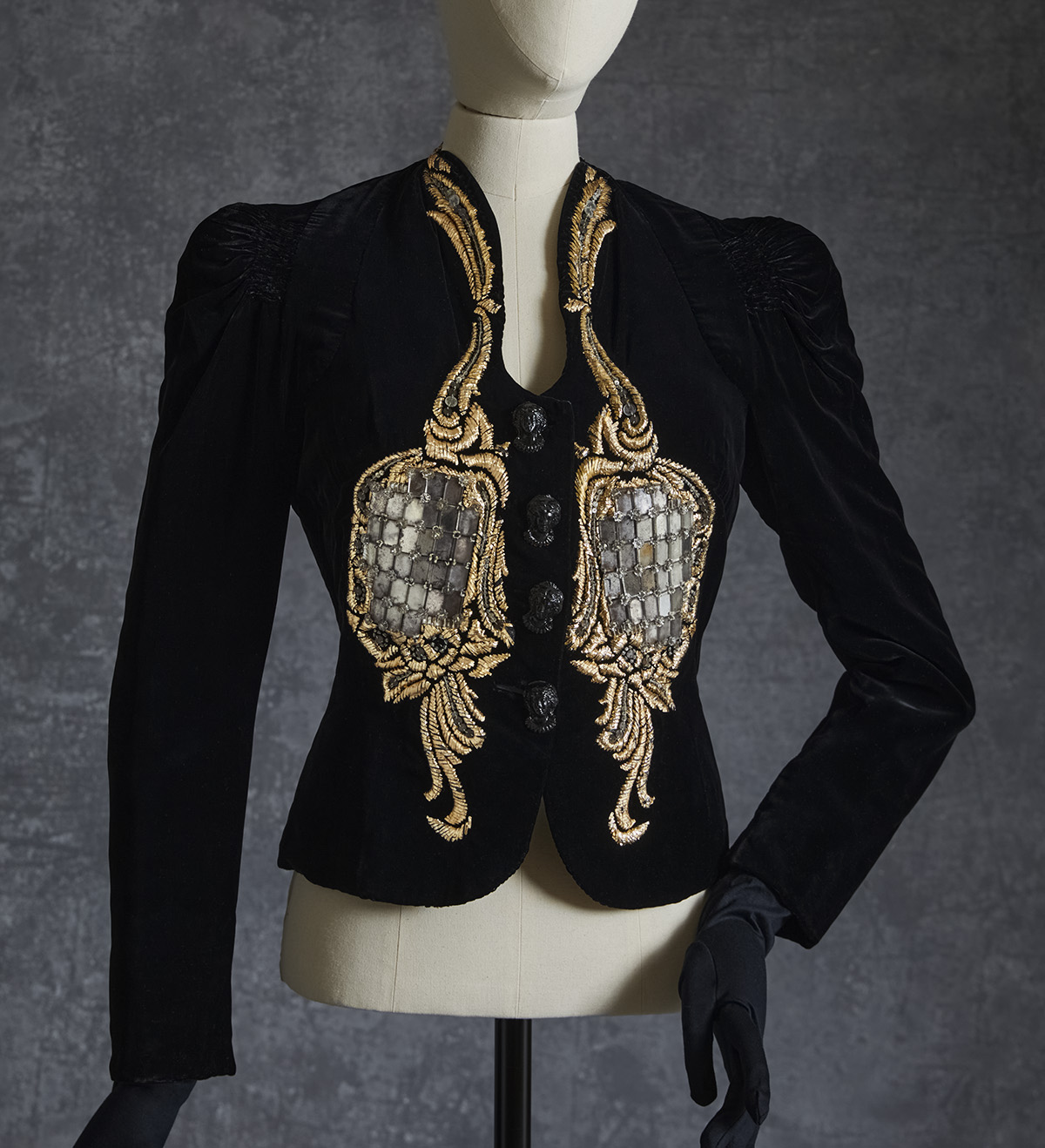
"The Museum at FIT is dedicated to advancing knowledge of fashion, and psychoanalysis provides important clues about the power and allure of fashion, as well as the ambivalence and hostility that fashion also attracts," says Dr. Valerie Steele.
Organized both chronologically and thematically, the exhibition begins by tracing the historical relationship between fashion and psychoanalysis. The introductory gallery opens with Freud's personal style circa 1900, as well as his radical ideas about sexuality and the unconscious, and his problematic theories about women's "exhibitionistic" and "narcissistic" relationship with fashion. The exhibition then takes visitors through the 1920s and 1930s, when psychoanalysis was popularly associated with sexual and personal freedom, especially for women and sexual minorities. In contrast to Freud, the British psychoanalyst J.C. Flügel envied women's freedom to adorn and expose themselves, whereas Joan Riviere, one of a growing cohort of female psychoanalysts, theorized that femininity was a "masquerade" necessitated by male prejudice. It is widely recognized that by the 1950s, most psychoanalysts, especially in the United States, were virulently homophobic and misogynistic. However, beginning in the second half of the 20th century, some feminists and LGBTQ+ activists stopped rejecting Freud as "the enemy" and instead called for an inclusive, liberatory psychoanalysis.
Following this historical overview, the exhibition continues thematically with various interpretations of fashion through the lens of psychoanalytic ideas about dreams, desire, sexual difference, and death. Freud interpreted most dreams as disguised sexual wishes— visualized by Moschino's chocolate bar dress, evoking the pleasure principle, the drive to seek pleasure and avoid pain. By contrast, Carl Jung interpreted dreams in terms of eternal archetypes from the collective unconscious. While many designers represent the feminine prototype of the queen or lover, Rick Owens created a more esoteric collection dedicated to the "priestesses of longing." Later, Freud would go "beyond the pleasure principle" to include the death drive, characterized by aggression, destruction, and hatred. Josephus Thimister referenced the slaughter of World War I in his collection, "1915 Opulence and Bloodshed," while Jun Takahashi of Undercover created a collection featuring roses and razor blades that could be interpreted as evoking Eros (life and love) versus Thanatos (death and destruction).
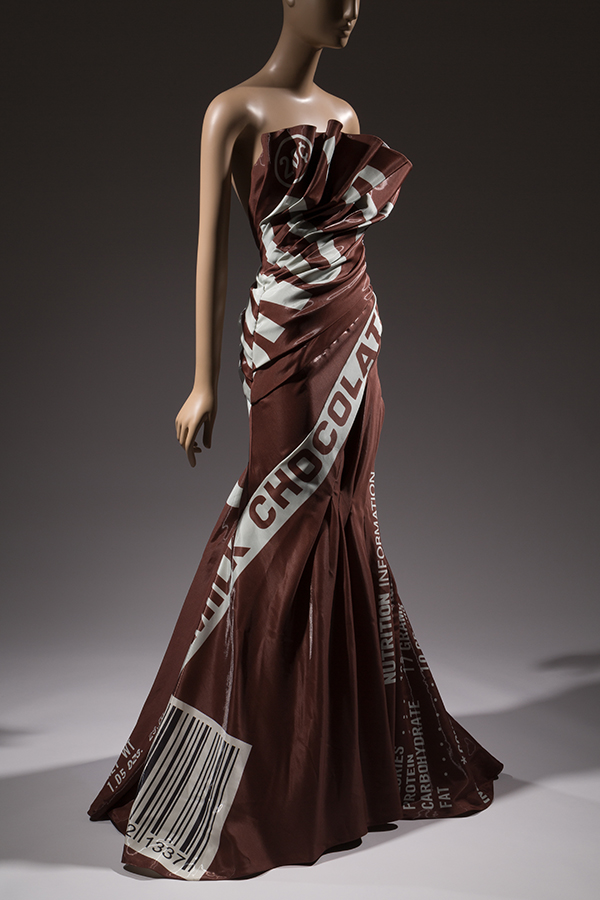
Jeremy Scott for Moschino evening gown, wool/silk and poylamide/nylon blend, fall 2014, Italy, museum purchase, 2019.55.1
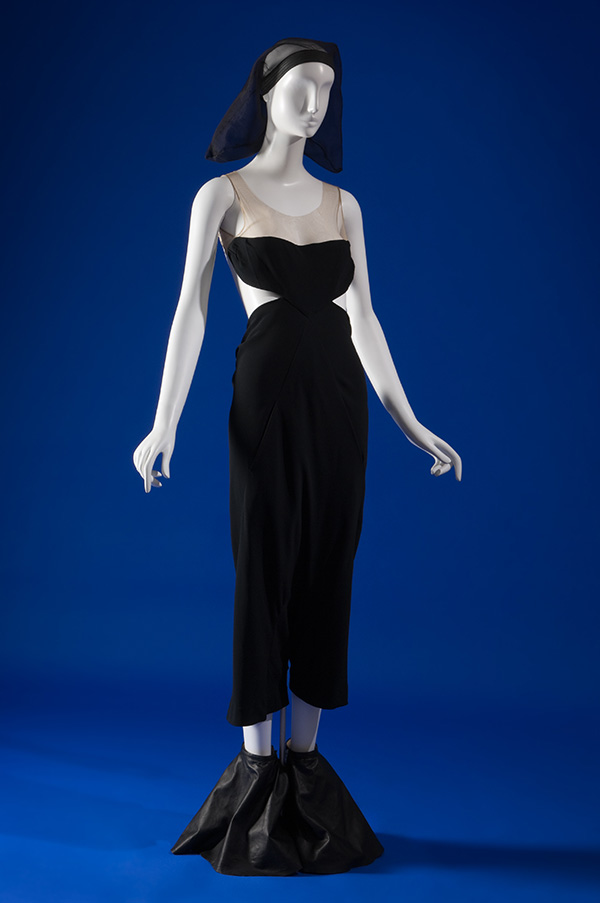
Rick Owens ensemble, silk crepe, leather, organza and tulle, spring 2009, France, gift of Rick Owens, 2008.90.1
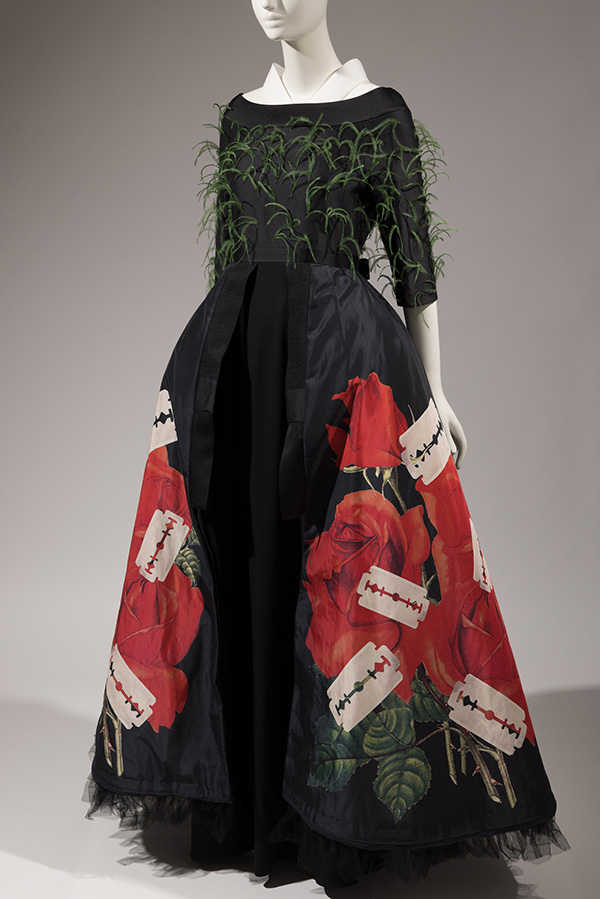
Jun Takahashi for Undercover ensemble, silk, polyester, wool, cotton, and nylon, fall 2020, Japan, museum purchase, 2021.6.1
The exhibition also explores the development of body image and personal identity, through the lens of Jacques Lacan's theory of the mirror stage—the lifelong process through which an individual develops a self-image—and Didier Anzieu's concept of the skin ego, or a sense of self formed initially through the sensations on the skin. Elsa Schiaparelli's famous mirror jacket, for example, could be interpreted partly in terms of her ambivalent attitude towards her own mirror image, or the body image created through internalizing the gaze of the other. Dress scholars have also recently drawn on Anzieu's skin ego to interpret clothing as a changeable, renewable second skin that provides both physical and psychological protection. The exhibition further investigates psychoanalytic ideas about the object of desire and sexual fetishism as well as the movement towards nonbinary and gender-fluid dress, which is related to contemporary openness in society about sexuality and gender.
Press, Publication, and Related Events

Exhibition Publication
Bloomberg Connects: Audio Analysis
The Unanswered Questions: Dreams, Symphonies, and Neuroses
Fashion and Psychoanalysis Symposium
In the Press
ALEM, Albanian Post, AP video, Articles of Interest, El País, The Fashion Bible (GR), Fashion Neurosis (Substack), Fashionista, Grace (GR), The Guardian, Happy Mag, Hyperallergic, Lucy Ashe (blog), Metaphysical Girl (Substack), Style POV (podcast), TAP Magazine, Time Out, Travesías, V Magazine, Vogue (FR)
"Dress, Dreams, and Desire: Fashion and Psychoanalysis" has been made possible thanks to the generosity of the Couture Council of The Museum at FIT. This project is supported in part by The Coby Foundation. The MFIT programs are made possible in part by the New York State Council on the Arts with the support of the Office of the Governor and the New York State Legislature.
